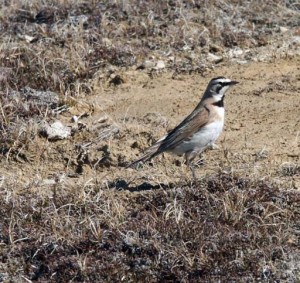What an interesting winter season! As this is being written the weather is mild and school children are out in our forest snowshoeing and learning about winter ecology. Recent snows have created a palette that is continually decorated with the tracks of mammals, and birds are quiet save the ever-active chickadees at the feeder. As part of our winter program, children will spend some time sitting quietly hoping to entice a chickadee to eat from their hand.
It is the ‘dead’ of winter, but instead of death the quiet in the woods reflects the fact that many plants and animals are enjoying a well-deserved rest, conserving their personal resources for the coming reproductive season. But not all is quiet…
Woodpeckers, many of which don’t migrate, are very busy probing tree trunks for insect treats. This week we’ve seen downy, hairy, red-bellied, and pileated woodpeckers actively moving about in the preserve. Trunks are as accessible to them now as they are in summer, and they know where insects and spiders hide. That doesn’t mean that they won’t enjoy some tasty suet at our feeders as well.
This past week, some woodpeckers began drumming. This differs from simply hammering on a tree to remove bark to get at insects. Drumming is creating sound to make one’s presence known to potential mates or rivals. It’s like singing, except that these birds are using a tool to create and amplify a sound- pretty clever I think. Of course, if they decide that the best place is some nice cedar siding or an aluminum rain gutter they might find themselves at odds with the people that live there, but that’s another story.
And even though it’s mid-winter other birds are starting to think about love- chickadees are singing their courtship songs on nice days (sounds like ‘cheeseburger’), cardinals are starting to sing their “Purdy-Purdy-Purdy” song, white-breasted nuthatches their “Eh-Eh-Eh-Eh” sort of call, and European starlings are becoming increasingly vocal, uttering all sorts of weird sounds and imitated calls of other birds.
 And out in the country on the shoulders of roads horned larks are starting to show up singly or in pairs or trios. They are very early migrants, tough as nails and able to survive out in open fields on the ground in cold weather. In a couple of weeks they will begin singing a beautiful and complex tinkling song over those fields on mild days as the snow melts, as if small bells were ringing in the new season.
And out in the country on the shoulders of roads horned larks are starting to show up singly or in pairs or trios. They are very early migrants, tough as nails and able to survive out in open fields on the ground in cold weather. In a couple of weeks they will begin singing a beautiful and complex tinkling song over those fields on mild days as the snow melts, as if small bells were ringing in the new season.
The length of day appears to stimulate these birds to sing, and their increasing songs remind us that spring isn’t really that far away. Just like human musicians, these wonderful animals use their talents to be noticed by others of their kind, and perhaps find a female companion.
